
漢德百科全書 | 汉德百科全书
 *United States presidential election
*United States presidential election

 *United States Political System
*United States Political System
 *United States presidential election
*United States presidential election
 *Republican Party
*Republican Party

 Party and government
Party and government
 *Political parties with more than a hundred years of history
*Political parties with more than a hundred years of history

Die Republikanische Partei (englisch Republican Party), auch als Republikaner (englisch Republicans) oder als Grand Old Party („große alte Partei“) bzw. GOP bezeichnet, ist neben der Demokratischen Partei eine der beiden großen Parteien der USA. Sie war ursprünglich die liberale der beiden Großparteien, ist aber heute konservativer eingestellt als die Demokratische Partei. Ihr Wappentier ist der Elefant. Dessen Ursprung geht, ebenso wie der Esel der Demokraten, auf den Karikaturisten Thomas Nast zurück. Die inoffizielle Parteifarbe ist seit 2000 rot. In TV-Sendungen oder Medienberichten werden Senatoren und Parteimitglieder der Republikanischen Partei meistens mit einem "(R)" hinter ihrem Namen dargestellt.
Die Partei wurde 1854 insbesondere mit dem Ziel gegründet, die Sklaverei abzuschaffen, womit sie sich während des Sezessionskrieges unter ihrem ersten US-Präsidenten Abraham Lincoln gegen die Demokraten durchsetzte, die für die Beibehaltung der Sklaverei plädierten. Seit den 1960er Jahren wandte sie sich zunehmend rechtskonservativen und evangelikalen Wählern zu.
Seit 2017 stellt sie mit Donald Trump den amtierenden (45.) US-Präsidenten. Davor stellte sie den Präsidenten von 2001 bis 2009 mit George W. Bush. Vorsitzende des nationalen Organisationsgremiums der Partei, des Republican National Committee, ist seit Januar 2017 Ronna Romney McDaniel.
共和党(英语:Republican Party)是美国的一个政党,又称为大老党(英语:Grand Old Party,简称GOP),与民主党并列为美国当代的两大主要政党之一。目前为美国联邦执政党,且拥有美国国会参议院多数党地位,27个州的执政权,并控制绝大部分的州议会。
共和党成立于1854年,是由《堪萨斯内布拉斯加州法》的反对者创立的,《堪萨斯内布拉斯加州法》允许将奴隶制潜在地扩展到某些美国领土。共和党支持古典自由主义,反对扩大奴隶制,并支持经济改革。[14] [15]亚伯拉罕·林肯(Abraham Lincoln)是第一位共和党总统。在林肯和共和党国会的领导支持下,奴隶制于1865年在美国被禁止。在第三党系统和第四党系统中,共和党总体上处于统治地位。 1912年以后,该党在思想上向右转移。[16]继1964年的《民权法》和1965年的《投票权法》之后,共和党的核心基础发生了变化,南方各州在总统选举中变得更加可靠地成为共和党人。[17]农村地区的人们,男人,未受过大学教育的人,老年人和白人倾向于支持共和党。[18] [19] [20]。 21世纪的共和党意识形态是美国的保守主义。共和党支持降低税收,自由市场资本主义,限制移民,增加军事开支,持枪权,限制堕胎,放松管制和限制工会。共和党除了提倡保守的经济政策外,在社会上也是保守的。在最高法院于1973年在Roe v. Wade案中作出裁决之后,共和党在其政党平台上反对堕胎,并在福音派信徒中得到了更多的支持。[21]共和党在成立之初就坚定地致力于保护主义和关税,但在20世纪,尽管关税在21世纪重新崛起,但它对自由贸易的支持越来越强。 美国历史上共计有19位共和党总统(包括现任总统唐纳德·特朗普,他于2016年当选),其中最多的是任何一个政党。截至2019年,共和党控制总统职位,美国参议院的多数席位,多数州州长,多数(30)个州立法机关和21个州政府三重奏(州政府和两个立法会议厅)。美国最高法院的九名现任法官中有五名是由共和党总统提名的。
共和党(きょうわとう、英語: Republican Party)は、アメリカ合衆国の政党。国際民主同盟加盟。民主党と共に二大政党制を構成している政党である。一般的に保守主義及びキリスト教の立場を取る。別称はGOP[19][注 2]。
伝統的保守層とキリスト教主義勢力(300万人を擁する「クリスチャン・コアリション」を筆頭とする福音派)の集票に支えられた政党である。
外交面では、力(パワー)による秩序と強力な同盟関係による安全保障策が基本であり、米国の国益を優先し国際連合(UN)に対しては不信感を持っている。
一方で内政面では、人工妊娠中絶禁止(プロライフ)、死刑制度存続、伝統的家族制度重視(同性結婚反対)、性的少数者・LGBTの権利擁護反対、不法移民反対、銃規制反対などが特徴の伝統的保守思想の政党である。なお近年は、キリスト教原理主義的な宗教重視の党員が多い。
The Republican Party, also referred to as the GOP (Grand Old Party), is one of the two major contemporary political parties in the United States; the other is its historic rival, the Democratic Party.
The GOP was founded in 1854 by opponents of the Kansas–Nebraska Act, which allowed for the potential expansion of slavery into certain U.S. territories. The party supported classical liberalism, opposed the expansion of slavery, and supported economic reform.[14][15] Abraham Lincoln was the first Republican president. Under the leadership of Lincoln and a Republican Congress, slavery was banned in the United States in 1865. The Party was generally dominant during the Third Party System and the Fourth Party System. After 1912, the Party underwent an ideological shift to the right.[16] Following the Civil Rights Act of 1964 and the Voting Rights Act of 1965, the party's core base shifted, with Southern states becoming more reliably Republican in presidential politics.[17] People living in rural areas, men, people without a college degree, the elderly, and white Americans are generally more likely to support the GOP.[18][19][20]
The 21st century Republican Party ideology is American conservatism, which incorporates both economic policies and social values. The GOP supports lower taxes, free market capitalism, restrictions on immigration, increased military spending, gun rights, restrictions on abortion, deregulation and restrictions on labor unions. After the Supreme Court's 1973 decision in Roe v. Wade, the Republican Party opposed abortion in its party platform and grew its support among evangelicals.[21] The GOP was strongly committed to protectionism and tariffs at its founding, but grew more supportive of free trade in the 20th century, although tariffs experienced a resurgence in the 21st century.
There have been 19 Republican presidents (including incumbent president Donald Trump, who was elected in 2016), the most from any one political party. As of 2020, the GOP controls the presidency, a majority in the U.S. Senate, a majority of state governorships, a majority (30) of state legislatures, and 21 state government trifectas (governorship and both legislative chambers). Five of the nine sitting U.S. Supreme Court justices were nominated by Republican presidents.
Le Parti républicain (en anglais : Republican Party, également surnommé Grand Old Party et abrégé en GOP) est l'un des deux grands partis politiques américains contemporainsb. Il est fondé le 28 février 1854 par des dissidents nordistes du Parti whig et du Parti démocrate, hostiles au statu quo sur l'esclavage, aux revendications souverainistes des États fédérés et favorables au protectionnisme.
Supplantant le Parti whig moribond, il devint le principal parti politique du pays alternant au pouvoir avec le Parti démocrate. Depuis sa fondation, c'est le parti qui a le plus exercé le pouvoir exécutif aux États-Unis, y compris sur une durée continue (1861-1885)c. Dans le référentiel bipartite de l’échiquier politique contemporain, le Parti républicain est généralement classé à droite (right-wing). Donald Trump, qui investit ses fonctions de président des États-Unis le 20 janvier 2017, est le 20e et plus récent président issu du parti à ce jour16.
Il Partito Repubblicano (in inglese: Republican Party), popolarmente noto come «Grand Old Party» (GOP) e come il «partito di Lincoln», è uno dei due principali partiti del sistema politico degli Stati Uniti insieme al Partito Democratico. Nel Congresso in carica governato dal Repubblicano Donald Trump come presidente degli Stati Uniti detiene la maggioranza dei rappresentanti al Senato. Fondato col nome moderno nel 1854 da ex esponenti dei Whig e del Suolo Libero nonché militanti di preesistenti movimenti antischiavisti per opporre l'allora governo Democratico e contrastare la temuta espansione nell'Ovest del sistema schiavistico degli Stati meridionali, posizionandosi alla sinistra del Partito Democratico nelle questioni economiche e sociali, rimane uno dei partiti più antichi del mondo tra quelli ancora attivi. I Whig furono l'unione di diversi partiti minori, tra cui quello Anti-Massonico e Nazionale Repubblicano. Quest'ultimo fu a sua volta l'unione di ex esponenti Federalisti e Democratici-Repubblicani, i quali andarono a formare il Partito Democratico in sostegno di Andrew Jackson mentre i Nazionali Repubblicani sostennero l'ex Democratico-Repubblicano John Quincy Adams nelle elezioni presidenziali del 1828, facendo quindi risalire i Repubblicani a entrambi i primi due partiti nazionali.
Nel contesto politico statunitense odierno è ormai considerato come il partito della destra conservatrice (pur con le sue fazioni interne di centro-destra, della destra cristiana e di quella libertariana) in contrapposizione al Partito Democratico, che è invece diventato il partito liberale, considerato un'unione del liberalismo sociale e del progressismo. Perlomeno fino alla scissione del 1912, con il posizionamento contemporaneo dei Democratici sul fronte di sinistra e con l'avvento del New Deal del Democratico Franklin Delano Roosevelt negli anni 1930, il Partito Repubblicano era considerato un partito più liberal-progressista degli avversari (i conservatori-populisti Democratici del Sud appoggiarono la segregazione razziale), anche se a livello locale e statale ciò non si realizzò almeno sino angli anni 1980 e 1990 in quanto i sudisti preferivano le politiche economiche Democratiche, ma ciò venne meno quando entrambi i partiti appoggiarono il neoliberismo. Promotore dell'industria nell'Ottocento e delle imprese nel Novecento, il Partito Repubblicano si è spostato verso il liberismo nelle questioni economiche, ma rimase liberal-progressista in quelle sociali perlomeno fino agli anni 1960. Fu dagli anni 1950 e 1960, dominati dalla presidenza dell'eroe di guerra Dwight D. Eisenhower in un clima di guerra fredda caratterizzato dall'intensificarsi dell'anticomunismo e dalla presa di distanza dalla politica statalista del New Deal, oltre che per il movimento per i diritti civili degli anni 1960 (approvato dal Partito Democratico durante le presidenze di John Fitzgerald Kennedy e Lyndon B. Johnson) e della cosiddetta strategia del Sud che prevedeva una retorica razzista per attirarsi il consenso dei bianchi del Sud, che il partito assunse definitivamente la fisionomia conservatrice moderna.
Sulle questioni di politica estera entrambi i partiti Repubblicani e Democratici hanno cambiato diverse volte le rispettive politiche. Inizialmente scettici del destino manifesto e dell'espansione a ovest a causa del problema della schiavitù che voleva fermare e che alla fine abolì sotto la presidenza di Abraham Lincoln, seppur a costo di una cruenta guerra civile negli anni 1860 contro i secessionisti schiavisti sudisti che formarono gli Stati Confederati d'America per mantenere l'Unione, i Repubblicani sono diventati imperialisti e interventisti sotto la presidenza dei progressisti William McKinley e Theodore Roosevelt e poi isolazionisti in opposizione ai Democratici guidati da Thomas Woodrow Wilson, formando il blocco della cosiddetta vecchia destra. Durante la guerra fredda furono promotori dell'anticomunismo come i Democratici, ma con Eisenhower e i suoi sostenitori avversari dell'ultraconservatore Repubblicano Joseph McCarthy, censurato nel 1954. A partire dagli anni 1950 e 1960 c'è un'unione nota come fusionismo tra conservatori e libertariani che porta al moderno conservatorismo del partito con la candidatura alle elezioni presidenziali del 1964 di Barry Goldwater, che seppur sconfitto di misura dal Democratico Johnson portò all'elezione di Richard Nixon (1969–1974) e all'ascesa di Ronald Reagan (1981–1989), seppur lo stesso Goldwater criticò l'influsso della destra cristiana. Molti di questi libertariani sono sostenitori del vecchio isolazionismo in opposizione al neoconservatorismo che domina il partito sin dalla guerra fredda.
El Partido Republicano (GOP) (en inglés, Republican Party; también conocido como GOP, de Grand Old Party, El Gran Partido Viejo) es un partido político de los Estados Unidos. Al lado del Partido Demócrata, son los dos únicos partidos que han ejercido el poder en ese país desde mediados del siglo XIX. El partido se asocia comúnmente con el conservadurismo. En la actualidad es el partido de gobierno al que pertenece el presidente Donald Trump y el que posee la mayoría en el Senado de los Estados Unidos.20
Республиканская партия (англ. Republican Party) — наряду с Демократической, одна из двух основных политических партий США. Второе название — Великая Старая Партия (англ. Grand Old Party, GOP).
Неофициальный символ партии — слон (олицетворяет мощь), неофициальный цвет — красный.
 *Democratic Party
*Democratic Party
 *United States Political System
*United States Political System
 *United States presidential election
*United States presidential election

 Party and government
Party and government
 *Political parties with more than a hundred years of history
*Political parties with more than a hundred years of history

Die Demokratische Partei (englisch Democratic Party, auch als Demokraten (Democrats) bezeichnet) ist neben der Republikanischen Partei eine der beiden großen Parteien in den USA. Ursprünglich eine Partei, die für Rassentrennung eintrat, gelten die Demokraten heute im Vergleich zu den Republikanern als liberaler, weniger konservativ und mehr am Progressivismus orientiert. Ihr inoffizielles Wappentier ist der Esel, obwohl er im Gegensatz zum Elefanten der Republikaner nie offiziell als solches angenommen wurde. Sein Ursprung geht, ebenso wie der Elefant der Republikaner, auf den Karikaturisten Thomas Nast zurück. Die ebenfalls inoffizielle Parteifarbe der Demokraten ist blau. In TV-Sendungen oder Medienberichten werden Senatoren und Parteimitglieder der Demokratischen Partei meistens mit einem „(D)“ hinter ihrem Namen dargestellt. Die Demokraten sind die älteste noch bestehende politische Partei der Welt.
Die Gründung der Partei geht auf Thomas Jefferson und das Jahr 1792 zurück. 1828 bauten Andrew Jackson und andere eine Massenpartei auf. Bis ins frühe 20. Jahrhundert galten die Demokraten als die konservativere der beiden großen Parteien. Das änderte sich ansatzweise während der Präsidentschaft Woodrow Wilsons (1913–1921), dann durch die Reformen des New Deal (1933–1938) und besonders nach dem Parteitag von 1948, als viele zumeist aus den Südstaaten stammende Vertreter einer Rassentrennung die Partei im Streit verließen. Die Demokraten wandten sich immer mehr liberalen und sozialliberalen Werten zu. Da die ursprünglich progressiven Republikaner spätestens seit 1964 ihrerseits nach rechts rückten, haben die beiden Parteien ihre Position im politischen Spektrum gewissermaßen getauscht.
Wie Parteien in den USA allgemein, sind die Demokraten wesentlich anders organisiert als europäische Parteien. So werden Bezirksvorstände, je nach Bundesstaat, zum Teil durch die allgemeine Wahlbevölkerung in Vorwahlen und nicht etwa durch Parteimitglieder allein gewählt. Wichtigstes Organ für die Gesamtpartei ist das Democratic National Committee (DNC, „Demokratisches Nationalkomitee“), das auch die Democratic National Convention (den vierjährlich zur Kür des jeweiligen Präsidentschaftskandidaten stattfindenden Parteitag) veranstaltet; derzeitiger Vorsitzender des DNC ist Tom Perez.
In sechs der letzten sieben Präsidentschaftswahlen gewannen die demokratischen Kandidaten die Mehrheit der abgegebenen Stimmen (Popular Vote); nur 2004 bildete eine Ausnahme. Mit Barack Obama stellte die Partei zuletzt von 2009 bis 2017 den 44. US-Präsidenten. Bei den Kongresswahlen im November 2010 verloren die Demokraten ihre Mehrheit im Repräsentantenhaus und konnten diese auch bei den Wahlen 2012, 2014 und 2016 nicht wiedererlangen. Auch im Senat verfügen sie seit Anfang 2015 nicht mehr über eine Mehrheit. In den Wahlen 2018 konnten sie dann allerdings wieder eine deutliche Mehrheit im Repräsentantenhaus erringen.
民主党(英语:Democratic Party)是美国的主要政党,与共和党并列为美国两大主要政党。当前是美国最大在野党,并拥有美国国会众议院多数党地位,而该党的州长多在东海岸的新英格兰和西海岸主政。
1828年第七任美国总统安德鲁·杰克逊创建民主党,1848年成立民主党全国委员会,本杰明·富兰克林·哈利特为首任主席,但它的起源最早可以追溯至托马斯·杰斐逊于1792年创立的民主共和党[11]。
民主党在建立之初主要代表美国南部和西部农场主的利益。因此民主党在19世纪中期通过法案强制驱逐印第安人,发动美墨战争,获得大量土地以供农耕。在美国内战中则支持奴隶制以维护成型的农业体制。民主党长期支持奴隶制,获得南方各州的支持。20世纪初,民主党加入民粹主义的农本主义,支持维护白人的工人权利,创建了联邦储备系统,并通过了反垄断法,限制大企业的垄断。自从1930年代以来,富兰克林·德拉诺·罗斯福总统推行新政并称之为美国的自由主义,成为了之后民主党的主要政策走向。新政一直到1960年代的民权运动。1960年代的民权运动以及越战导致在民主党内部引发了对国外军事干预的立场及国内政策严重分歧,这种分歧导致之后民主党失去执政地位,但民主党维持对国会两院的控制权直至至1995年。而民主党的根基也逐渐从倾向白人、蓝领、工人阶级和农民利益,转变为以东西岸的都会居民、富裕阶层、女性和少数族裔为主。
民主党(みんしゅとう、Democratic Party)は、アメリカ合衆国の政党。共和党と共に二大政党制を構成している。
一般的に保守の立場を取る共和党に対し、リベラルの立場を取る政党である。進歩同盟加盟。
21世紀においては、2011年以降で連邦議会下院の多数派の地位を失っていたが、2018年の中間選挙(共和党:ドナルド・トランプ大統領)において多数議席を回復した。また、直近では、2007年から2015年まで連邦議会上院において多数議席を占め、2009年から2017年まで大統領(バラク・オバマ政権)を擁した。
労働運動やマイノリティの集票力が大きく、外交面では、国際主義的で国際連合(UN)へのスタンスも好意的である。
内政面では、人工妊娠中絶完全自由化、死刑制度廃止、不法移民容認、労働組合重視、伝統的結婚制度維持反対(同性結婚賛成)同性愛容認、LGBTの権利擁護容認、宗教多様化容認などが特徴であり、リベラル思想の政党である。
The Democratic Party is one of the two major contemporary political parties in the United States, along with its main rival, the Republican Party. Tracing its heritage back to Thomas Jefferson and James Madison's Democratic-Republican Party, the modern-day Democratic Party was founded around 1828 by supporters of Andrew Jackson, making it the world's oldest active political party.[18]
In its early years, the Party supported limited government, state sovereignty and opposed banks and the abolition of slavery. Since Franklin D. Roosevelt and his New Deal coalition in the 1930s, the Democratic Party has promoted a social liberal platform.[3][19] Well into the 20th century, the party had conservative pro-business and Southern conservative-populist wings; following the New Deal, however, the conservative wing of the party largely withered outside the South. The New Deal Coalition of 1932–1964 attracted strong support from voters of recent European extraction—many of whom were Catholics based in the cities.[20][21][22] After the Civil Rights Act of 1964 and the Voting Rights Act of 1965, the core bases of the two parties shifted, with the Southern states becoming more reliably Republican in presidential politics and the Northeastern states becoming more reliably Democratic. The once-powerful labor union element became smaller and less supportive after the 1970s. White evangelicals and Southerners have become heavily Republican at the state and local levels since the 1990s. People living in urban areas, women, college graduates, sexual and gender minorities, millennials, and black, Latino, Jewish, and Asian Americans tend to support the Democratic Party.[23][24][25]
The Democratic Party's philosophy of modern liberalism advocates social and economic equality, along with the welfare state.[26] It seeks to provide government regulation in the economy.[27] Policies such as environmental protection, support for organized labor and labor unions, the introduction of social programs, affordable college tuition, universal health care, equal opportunity, and consumer protection form the core of the party's economic policy.[26][28] On social issues, it advocates campaign finance reform,[29] LGBT rights,[30] police and immigration reform,[31] stricter gun laws,[32] and the legalization of marijuana.[33]
There have been 15 Democrats who have served as president of the United States. The first was Andrew Jackson, who was the seventh president and served from 1829 to 1837. The most recent was Barack Obama, who was the 44th and held office from 2009 to 2017. As of 2019, the Democrats hold a majority in the House of Representatives, 15 state government trifectas (governorship and both legislative chambers),[34] the mayoralty of most major American cities,[35] and 19 total state legislatures. Four of the nine sitting justices of the Supreme Court were appointed by Democratic presidents.
Le Parti démocrate est un parti politique américain qui s'oppose, dans le contexte du système bipartite, au Parti républicain. Il est l'une des plus grandes organisations politiques mondiales avec plus de 44 millions d'adhérents en 2017.
Le Parti démocrate conçoit la société américaine comme une union des communautés de citoyens. Il veut assurer la protection égale de leurs droits particuliers, notamment pour les moins puissants. Il est donc traditionnellement la « grande tente » dans laquelle les minorités se retrouvent23, qu'elles soient ethniques (Afro-Américains depuis le New Deal, Hispaniques et Latino-Américains, Asio-Américains), religieuses (catholiques, musulmans et juifs) ou sociologiques (intellectuels, artistes). Son principal adversaire, le Parti républicain, est considéré a contrario comme un parti White Anglo-Saxon Protestant visant à imposer la force de l'Union par le respect des valeurs centrales qui permettent la réussite des meilleurs, proche des milieux d'affaires et financiers, soutenu par les professions libérales et les entrepreneurs.
Le Parti démocrate est issu de la scission du Parti républicain-démocrate fondé par Thomas Jefferson en 179224. Doyen des partis américains et mondiaux, il est à l'origine un parti anti-fédéraliste défendant la liberté des États face au pouvoir fédéral, et celle des propriétaires individuels face aux intérêts bancaires et industriels. À l'époque de la Guerre de Sécession, il défend également l'esclavage face au parti républicain de Lincoln, abolitionniste. Il évolue nationalement vers une vision moins conservatrice25 et moins méfiante du pouvoir fédéral dès les années 1890, et plus nettement dans les années 1930 avec le président Franklin Delano Roosevelt, en valorisant le rôle de l'État dans la protection des minorités. Dans les années 1960 et 1970, il s'inscrit à gauche sous l'impulsion des sénateurs Hubert Humphrey, George McGovern ou Edward Moore Kennedy, puis se place vers le centre sous les mandats de Jimmy Carter et Bill Clinton avant de se réorienter à gauche sous la présidence de Barack Obama avec l'influence de Bernie Sanders, Elizabeth Warren, Jesse Jackson, Keith Ellison et Nancy Pelosi.
À l'échelle internationale, le Parti démocrate est, depuis 2013, membre de l'Alliance progressiste qui regroupe l'ensemble des partis politiques progressistes, sociaux-démocrates et socialistes proche de l'Internationale socialiste. Il est dirigé par le Comité national démocrate.
Il Partito Democratico (in inglese: Democratic Party) è un partito politico liberale statunitense, nonché uno dei due principali partiti del sistema politico statunitense insieme al Partito Repubblicano. Nel contesto politico statunitense odierno è considerato come il partito di centro-sinistra e della sinistra liberale (pur con le sue fazioni interne più conservatrici di centro e centro-destra e più socialdemocratiche di sinistra) in contrapposizione al Partito Repubblicano, che è invece diventato il partito della destra conservatrice, un'unione del liberalismo con il conservatorismo sociale e il tradizionalismo. Nel Congresso in carica il Partito Democratico detiene la maggioranza alla Camera dei rappresentanti (riconquistata nel 2018 dopo averla persa nel 2010), avendo perso il controllo del Senato nel 2014 e della presidenza nel 2016.
Fondato col nome moderno nel 1828 dai sostenitori di Andrew Jackson, il Partito Democratico è il più antico del mondo tra quelli attivi, originando dal Partito Democratico-Repubblicano fondato da Thomas Jefferson, James Madison e altri influenti anti-Federalisti nel 1792. Dopo la spaccatura dei Democratici-Repubblicani nel 1828 si è posizionato alla destra dei centristi Whig, partito predecessore del Partito Repubblicano di sinistra per quanto riguarda la questione della schiavitù che dominò quegli anni, soprattutto a partire dagli anni 1840 fino agli anni 1860, con i vari compromessi dei Whig che alla fine si sono rivelati inefficaci e che portarono alla fondazione del Partito Repubblicano nel 1854 da ex esponenti dei Whig e del Suolo Libero nonché militanti di preesistenti movimenti antischiavisti per opporre l'allora governo Democratico e contrastare la temuta espansione a ovest del sistema schiavistico degli Stati meridionali dominato dai Democratici.
L'elezione del Repubblicano Abraham Lincoln nel 1860 portò a una cruenta guerra civile tra i Democratici secessionisti schiavisti sudisti che formarono gli Stati Confederati d'America e i Repubblicani a favore dell'Unione. Ciò causò diversi dissidi interni al partito, con fazioni in favore dell'Unione e fazioni schiaviste intransigenti (già alle elezioni presidenziali del 1860 vinte da Lincoln i Democratici proposero due candidati, uno del nord e uno del sud). Il Democratico Andrew Johnson in favore dell'Unione fu scelto come vicepresidente da Lincoln per le elezioni presidenziali del 1864, con i due che si presentarono insieme come il Partito dell'Unione Nazionale così da favorire il consenso dei Democratici che non avrebbero votato per un duo Repubblicano mentre i Democratici presentarono l'intransigente generale filo-sudista George McClellan, uscendo sconfitti e poi perdendo definitivamente la guerra di secessione. Il Proclama di emancipazione abolì la schiavitù, ma Lincoln fu assassinato nel 1865 e Johnson prese il suo posto. Ciò causò fastidi ai Repubblicani, soprattutto alla fazione più liberale e radicale in fatto di diritti civili per gli ex schiavi afroamericani, arrivando alla fallita messa in stato di accusa del 1868 per un solo voto. Durante l'era della ricostruzione i Democratici cercarono di bloccare l'emancipazione civile e politica degli afroamericani, soprattutto nel Sud, riuscendoci nel 1877 come parte di un accordo bilaterale per eleggere il Repubblicano Rutherford B. Hayes alla carica di presidente a seguito delle controverse e dibattute elezioni presidenziali del 1876, con le truppe militari che non poterono più sostenere i governi statali Repubblicani nel Sud.
Nonostante la questione schiavista, il Partito Democratico proponeva certe politiche egalitarie, era a favore della democrazia e si proclamava partito della gente comune. Si spostò più a sinistra nelle questioni economiche dopo la vittoria dell'ala populista di William Jennings Bryan nel 1896 e con il New Deal («nuovo corso»), sebbene fino agli anni sessanta del Novecento molti Democratici conservatori e populisti degli Stati meridionali erano ancora favorevoli alla segregazione razziale. Di fatto il supporto dei sudisti che erano a favore di politiche economiche di sinistra fu importante nell'attuare la legislazione del New Deal di Franklin Delano Roosevelt. Pur favorendo le politiche sociali del Repubblicano Barry Goldwater, essi rigettarono le sue proposte economiche liberiste e di privatizzazione dello Stato sociale. La filosofia attivista a favore della classe lavoratrice di Roosevelt chiamata liberalismo (un'unione del liberalismo sociale e del progressismo) ha infatti rappresentato gran parte del programma del partito sin dal 1932. A partire dal 1948, con la desegregazione delle Forze armate statunitensi attuata dal presidente Harry Truman, i Democratici si sono spostati a sinistra anche sulle questione sociali. Dagli anni 1970 l'ambientalismo è diventato un importante corrente nel partito.
Sulle questioni di politica estera entrambi i partiti Democratici e Repubblicani hanno cambiato diverse volte le rispettive politiche. Inizialmente promotori del destino manifesto e dell'espansione a ovest, i Democratici sono diventati anti-imperialisti e isolazionisti sotto la presidenza di Grover Cleveland (liberista) e poi interventisti e internazionalisti a partire dalla presidenza di Thomas Woodrow Wilson (liberal-progressista). Durante la guerra fredda furono promotori dell'anticomunismo, ma avversari dell'ultraconservatore Repubblicano Joseph McCarthy. Molti attivisti Democratici si opposero alla guerra del Vietnam, alienati dal crescente militarismo e promotori della controcultura e della nuova sinistra. Da allora il partito è diventato più pragmatico e aperto al multilateralismo, sebbene la fazione neoconservatrice in politica estera mantenne la presidenza, approvando l'interventismo in Jugoslavia negli anni 1990 e quello in Medio Oriente negli anni 2010, ma rigettando la guerra in Iraq a inizi anni 2000. La fazione opposta in politica estera è rappresentata tra gli altri da Bernie Sanders, Tulsi Gabbard e per certi versi anche da Elizabeth Warren, oltre che dalla cosiddetta Squad.
La coalizione del New Deal di Roosevelt controllò spesso il governo nazionale fino al 1964 e il movimento per i diritti civili degli anni 1950 e 1960 lo confermò nel centro-sinistra mentre i Repubblicani si spostarono sempre più a destra, facendogli tuttavia perdere parte dei consensi negli Stati meridionali e perdendo le successive due elezioni presidenziali, anche se a livello locale e statale ciò non si realizzò almeno sino angli anni 1980 e 1990 in quanto i sudisti preferivano le politiche economiche Democratiche, ma ciò venne meno quando entrambi i partiti appoggiarono il neoliberismo. A partire dagli anni 1990 i Democratici hanno infatti approvato il programma di Bill Clinton della più centrista terza via, cui anche il presidente Barack Obama ha aderito come Nuovo Democratico, per provare a vincere le elezioni dopo dodici anni, cosa che ha avuto successo con Clinton (1993–2001) e Obama (2009–2017), ma che fallì con Al Gore (2000) e Hillary Clinton (2016).
El Partido Demócrata (en inglés: Democratic Party) es un partido político progresista, que junto con el Partido Republicano, es uno de los dos partidos más grandes de los Estados Unidos. Traza sus orígenes al Partido Demócrata-Republicano de Thomas Jefferson y James Madison. Fue fundado alrededor de 1828 por seguidores de Andrew Jackson, convirtiéndolo en el partido político activo más antiguo del mundo.11
La filosofía del partido fue en sus inicios, el conservadurismo, siendo el populismo su característica principal en las zonas rurales del sur de los Estados Unidos.12.13 Hasta bien entrado el siglo XX, el partido tenía alas conservadoras pro-negocios y alas sureñas conservador-populistas anti-negocios. Gracias al New Deal, sin embargo, el ala conservadora del partido se extinguió fuera del Sur. La Coalición New Deal de 1932 a 1964 atrajo fuerte apoyo de votantes con orígenes europeos recientes, muchos de los cuales eran católicos que habitaban grandes ciudades.141516 Después de la conmoción racial de la década de 1960, la mayor parte de los sureños blancos y católicos del norte mudaron sus ideologías al Partido Republicano. El otrora poderoso sindicato se volvió más pequeño y menos comprensivo después de los años setenta. Evangélicos caucásicos y sureños por igual, se volvieron arduos republicanos a nivel local y estatal desde los años noventa. La gente que habita áreas metropolitanas, mujeres, minorías sexuales, milenials, graduados universitarios y minorías raciales y étnicas1718 tienden a apoyar al Partido Demócrata mucho más de lo que apoyan al Partido Republicano rival.
La filosofía del Partido Demócrata del liberalismo moderno aboga por la igualdad social junto con el estado del bienestar.19 20
Políticas como la introducción de programas sociales, el apoyo a los sindicatos, matrícula universitaria asequible, atención médica universal, igualdad de oportunidades, protección del consumidor y del medio ambiente constituyen el núcleo de la política económica del partido.1921 En cuestiones sociales, el partido apoya los derechos reproductivos, los derechos LGBT, la reforma migratoria, la reforma de financiación de campañas, el control de armas y la legalización de la marihuana.
Quince demócratas han servido como presidente de los Estados Unidos. El primero fue el presidente Andrew Jackson, que fue el séptimo presidente y se desempeñó desde 1829 hasta 1837. El más reciente fue el presidente Barack Obama, quien fue el 44º presidente y ocupó el cargo desde 2009 hasta 2017. Después de las elecciones intermedias de 2018, los demócratas obtuvieron la mayoría en la Cámara de Representantes, "trifectas" (poder ejecutivo y ambas cámaras del poder legislativo) en 14 estados,22 y la alcaldía de numerosas grandes ciudades estadounidense.23 Veintitrés gobernadores estatales son demócratas, y el partido forma minoría en el Senado y en la mayoría de las legislaturas estatales (control total de 18/50, control dividido de los demás). En abril de 2019, cuatro de los nueve jueces de la Corte Suprema habían sido nombrados por presidentes demócratas.
Демократическая партия (англ. Democratic Party) — наряду с Республиканской, одна из двух крупнейших современных политических партий США. Является самой старой партией в США. Её неофициальный символ — ослик (символ упрямого преодоления препятствий и выносливости), неофициальный цвет — голубой.
Начиная с 1930-х годов партия занимает социально-либеральные и прогрессивные позиции,[2][3]

 *Democratic Party
*Democratic Party
 *United States Political System
*United States Political System
 *United States presidential election
*United States presidential election
 *Republican Party
*Republican Party

政治捐款是民主社会的民众表达个人意愿的方式之一,受到法律的严格保护。但是,为了保证政治捐款不被滥用,也为了保证政治捐款的公正透明,美国法律对政治捐款有十分严密的规定,对捐款数额上限的限定就是其中之一。根据联邦法律,即使是亿万富豪,其捐款上限与工薪平民一样,比如选举期间,个人捐给每位总统候选人的钱最多2700美元,也就是说,即使你再有钱,也不能想捐多少就捐多少,这与慈善捐款没有任何上限规定是不同的。另外,法律规定企业与工会是不允许直接捐款给任何候选人的。
涉及全国的选举,包括大选、中期选举等,有关政治捐款的法律由国会通过,并由独立机构联邦选举委员会(Federal Election Commission)负责监督实施;州及地方选举的法律则由各州议会通过。这里主要介绍联邦法律的规定。根据最新的法规,选举期间有关个人政治捐款的规定如下:
1,每次选举,捐给每位候选人或候选人竞选委员会的金额最多2700美元。
2,每年可以捐给政治行动委员会(PAC)最多5000美元。政治行动委员会是由不同企业、工会或其他非政府、非营利机构资助的政治组织,这个委员会可以根据自己的偏好,将资金运用到不同选举或政治活动上。
3,每年可以捐给州或地方政党委员会最多1万美元。
4,每年可以捐给全国性政党委员会最多33400美元,全国性政党委员会包括政党全国委员会、众议院竞选委员会和参议院竞选委员会,每一个委员会都可以分别得到每人每年最多33400美元的捐款。
5,现金捐款不得超过100美元,匿名现金捐款不得超过50美元。100美元以上的捐款必须是支票、汇票等。
上述个人捐款限制在总统大选期间略有不同,总统大选期间的规定是:捐给总统候选人的捐款分为各州初选及大选两个部分:各州初选时捐给每位候选人的金额最多2700美元,大选时捐给每位候选人的金额也是最多2700美元。区别是:
各州初选时,如果总统候选人符合“联邦配拨资金项目”(Federal matching fund program)的资格,则“联邦配拨资金项目”可以额外拿出最多250美元的所谓“配拨”资金给候选人。举例来说,路易斯捐款给总统候选人马克500美元,马克符合得到联邦配拨资金项目的资格,则联邦配拨资金项目会再给马克250美元作为竞选之用,假如路易斯只捐给马克200美元,则联邦配拨资金项目拿出给马克的钱也只有200美元。
大选时如果候选人选择使用联邦政府的选举资金,那么就不能再接受任何个人捐款;接受个人捐款,就不能使用联邦资金。也就是说,初选阶段的“联邦配拨资金项目”到大选时就不适用了。2008年大选时,共和党候选人约翰·麦凯恩选择使用联邦资金,他的本意是要让选民知道不靠大规模募捐一样可以选总统,可惜后来败给了后起之秀奥巴马。
除了捐款上限有限定外,法律还禁止外国人、政府合同商、企业及工会捐款给候选人。有关法规的细则,联邦选举委员会网站有详细的介绍,网址是:
http://www.fec.gov/pages/brochures/citizens.shtml
 *United States Political System
*United States Political System
 Recht der Vereinigten Staaten
Recht der Vereinigten Staaten
 *United States presidential election
*United States presidential election
 United States history
United States history

 Law
Law
 §Common Law
§Common Law


Die Verfassung der Vereinigten Staaten vom 17. September 1787 legt deren politische und rechtliche Grundordnung fest. Sie sieht heutzutage eine föderale Republik im Stil eines Präsidialsystems vor, in der der Präsident sowohl Staats- als auch Regierungschef ist. Das politische System zeichnet sich durch eine oft als „Checks and Balances“ bezeichnete Gewaltenteilung aus, in der Gesetzgebung, Verwaltung und Rechtsprechung zwar getrennt voneinander agieren, sich aber durch weitreichende Verschränkungen auch gegenseitig kontrollieren.
Die Verfassung der Vereinigten Staaten ist eine der ältesten republikanischen Verfassungen, die heute noch in Kraft sind[1] (die älteste ist die Verfassung der Republik San Marino, die im Jahre 1600 in Kraft trat). Der ursprüngliche Text besteht aus sieben Artikeln und wurde im Verlauf von zwei Jahrhunderten um 27 Artikel ergänzt. Kernkomponenten wie die Gewaltenteilung, die Bill of Rights als verbindlicher Grundrechtekatalog und das Bekenntnis zu Recht und Gesetz entsprangen neuen politischen Konzepten, die im Zeitalter der Aufklärung entwickelt und verbreitet wurden.
Die Verfassung löste mit ihrer Ratifikation 1788 die vorher bestehenden Konföderationsartikel ab. Sie wurde von zwölf der dreizehn ehemaligen britischen Kolonien während des als Philadelphia Convention bekannten Verfassungskonvents entworfen.
 *United States Political System
*United States Political System
 *President and Vice President of the United States
*President and Vice President of the United States
 *United States presidential election
*United States presidential election
 President or Chairman
President or Chairman
 President or Chairman
President or Chairman
 United States
United States
 United States
United States

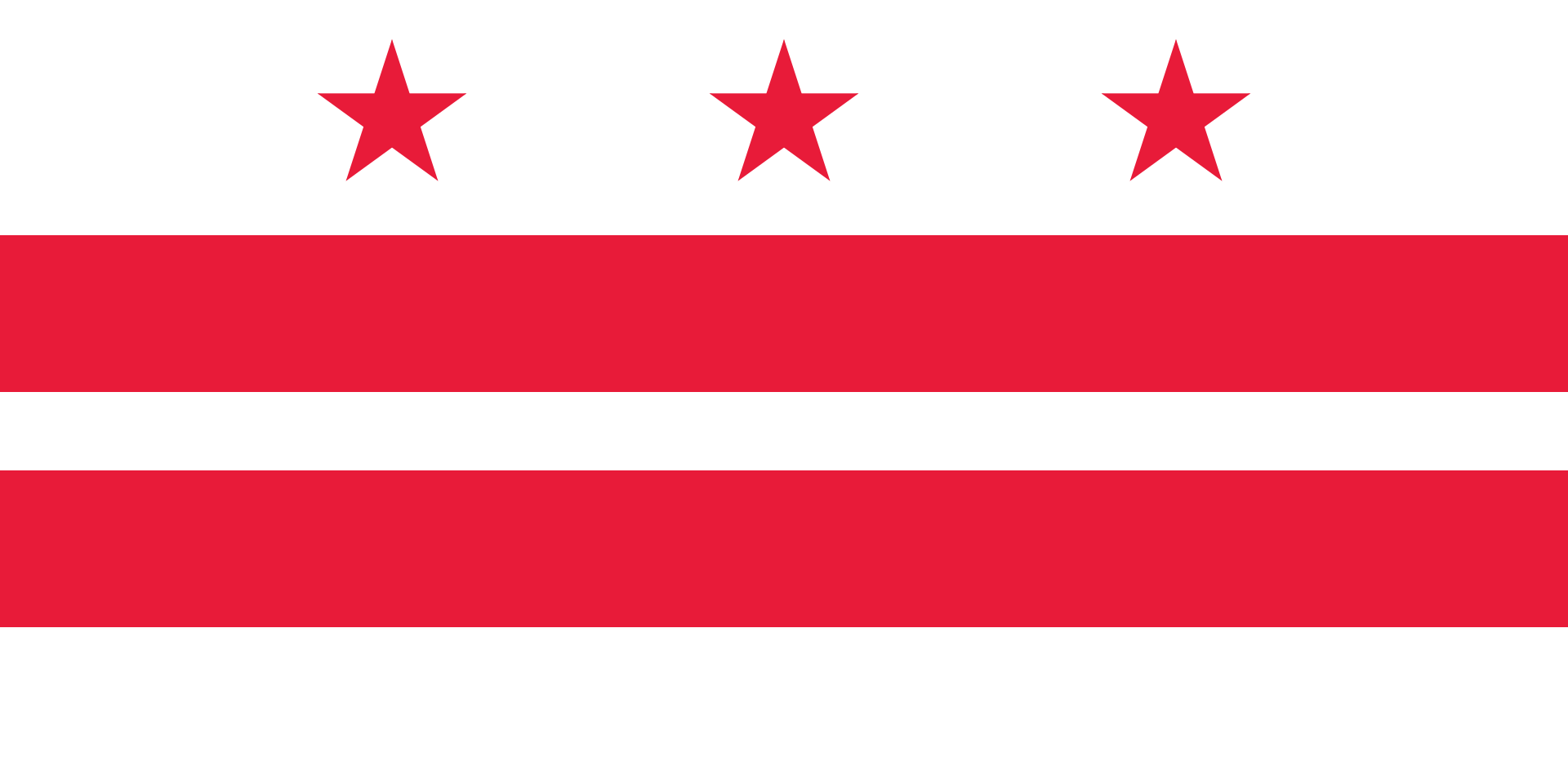 Washington, D.C.
Washington, D.C.

美利坚合众国总统(英语:President of the United States,缩写为POTUS[1];中文简称美国总统)是美国的国家元首、政府首脑和三军统帅。根据1787年通过的美国宪法而设立,行使宪法赋予的行政权。
Der Präsident der Vereinigten Staaten von Amerika (englisch amtlich President of the United States of America, Akronym POTUS) ist in einer Person Staatsoberhaupt, Regierungschef und Oberbefehlshaber der Streitkräfte der USA.
 *Track and field athletics
*Track and field athletics
 4x100 m Woman
4x100 m Woman
 *Track and field athletics
*Track and field athletics
 4x400 m Woman
4x400 m Woman
 *Track and field athletics
*Track and field athletics
 4x100 m Men
4x100 m Men
 *Track and field athletics
*Track and field athletics
 4x400 m Men
4x400 m Men
 *United States presidential election
*United States presidential election
 Atomic bomb
Atomic bomb

 History
History
 M 1500 - 2000 AD
M 1500 - 2000 AD

 History
History

 History
History

 History
History

 History
History
 N 2000 - 2100 AD
N 2000 - 2100 AD
 Leichtathletik-Weltmeisterschaften
Leichtathletik-Weltmeisterschaften
 2017 London
2017 London
 Leichtathletik-Weltmeisterschaften
Leichtathletik-Weltmeisterschaften
 2015 Beijing
2015 Beijing
 Leichtathletik-Weltmeisterschaften
Leichtathletik-Weltmeisterschaften
 2013 Moskau
2013 Moskau
 Leichtathletik-Weltmeisterschaften
Leichtathletik-Weltmeisterschaften
 2009 Berlin
2009 Berlin
 Leichtathletik-Weltmeisterschaften
Leichtathletik-Weltmeisterschaften
 2007 Osaka
2007 Osaka
 Leichtathletik-Weltmeisterschaften
Leichtathletik-Weltmeisterschaften
 2011 Daegu
2011 Daegu
 Leichtathletik-Weltmeisterschaften
Leichtathletik-Weltmeisterschaften
 2005 Helsinki
2005 Helsinki
 Leichtathletik-Weltmeisterschaften
Leichtathletik-Weltmeisterschaften
 2003 Saint-Denis
2003 Saint-Denis
 Leichtathletik-Weltmeisterschaften
Leichtathletik-Weltmeisterschaften
 1999 Seville
1999 Seville
 Leichtathletik-Weltmeisterschaften
Leichtathletik-Weltmeisterschaften
 1997 Athens
1997 Athens
 Leichtathletik-Weltmeisterschaften
Leichtathletik-Weltmeisterschaften
 1995 Gothenburg
1995 Gothenburg
 Leichtathletik-Weltmeisterschaften
Leichtathletik-Weltmeisterschaften
 1993 Stuttgart
1993 Stuttgart
 Leichtathletik-Weltmeisterschaften
Leichtathletik-Weltmeisterschaften
 1991 Tokyo
1991 Tokyo
 Leichtathletik-Weltmeisterschaften
Leichtathletik-Weltmeisterschaften
 1987 Rome
1987 Rome
 Leichtathletik-Weltmeisterschaften
Leichtathletik-Weltmeisterschaften
 1983 Helsinki
1983 Helsinki


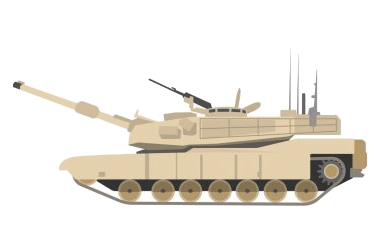
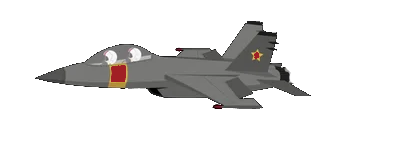
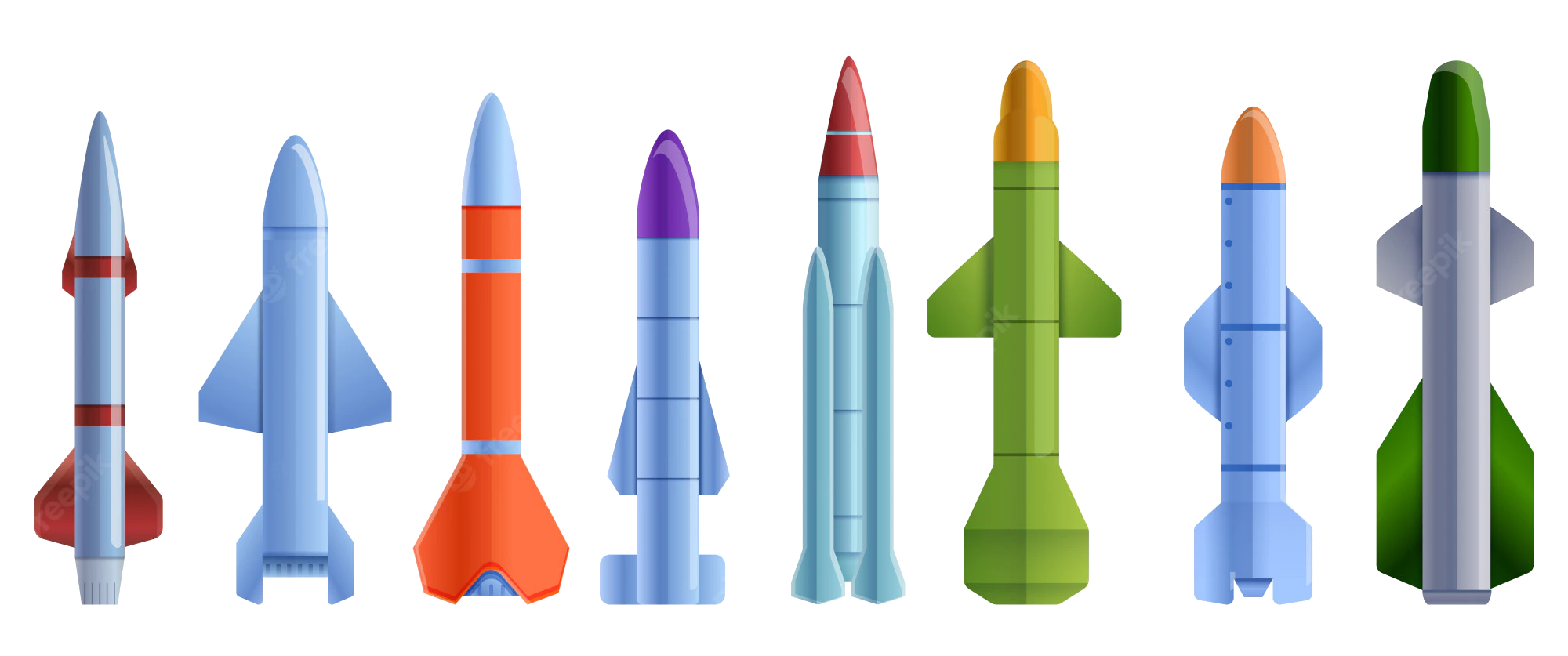 Military, defense and equipment
Military, defense and equipment
 Nuclear Weapon
Nuclear Weapon

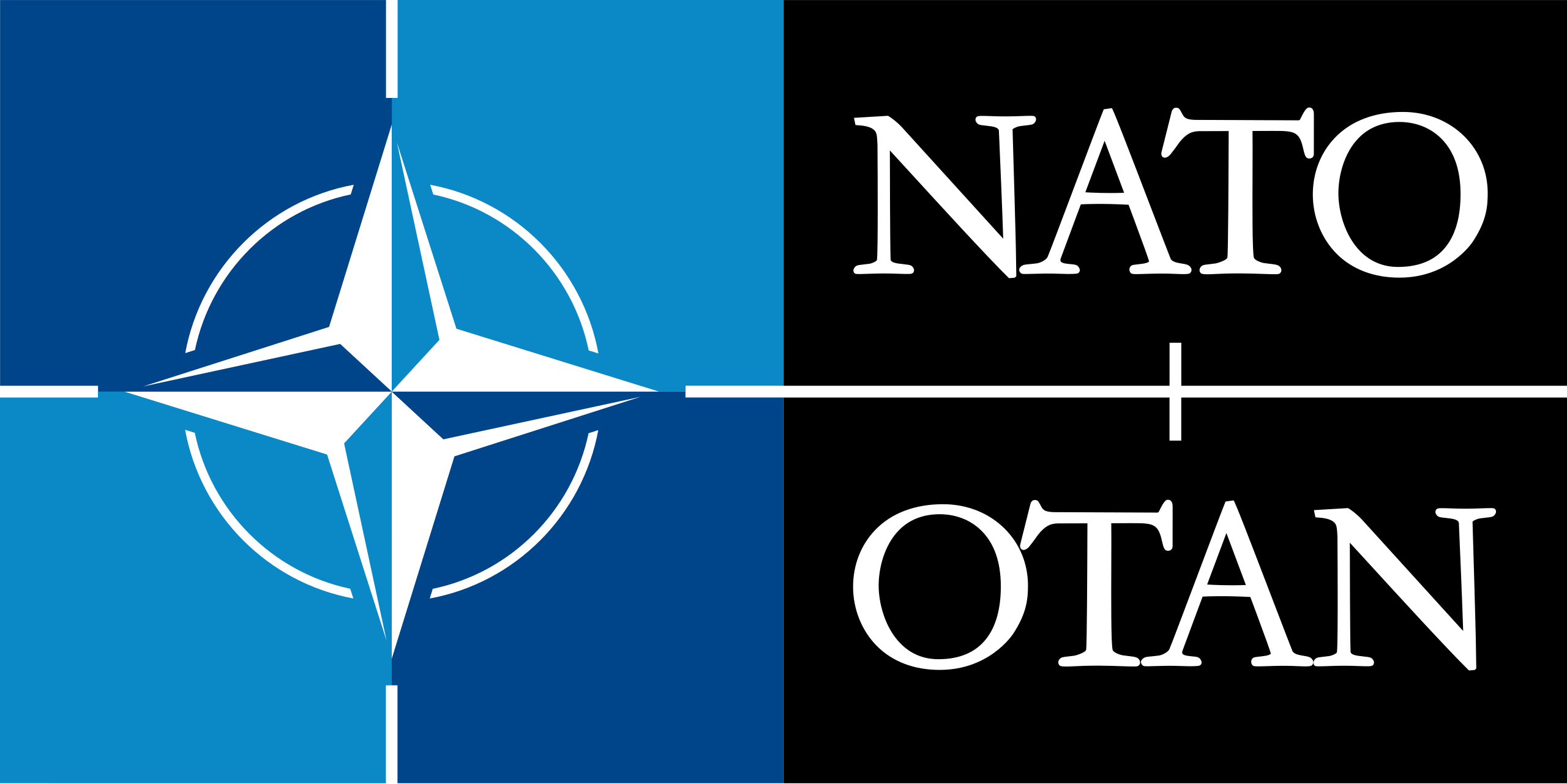 Mitglieder der NATO
Mitglieder der NATO

 Party and government
Party and government
 Group of the twenty most important industrial and emerging countries
Group of the twenty most important industrial and emerging countries

 Party and government
Party and government
 Group of Seven,G7
Group of Seven,G7
 United States
United States

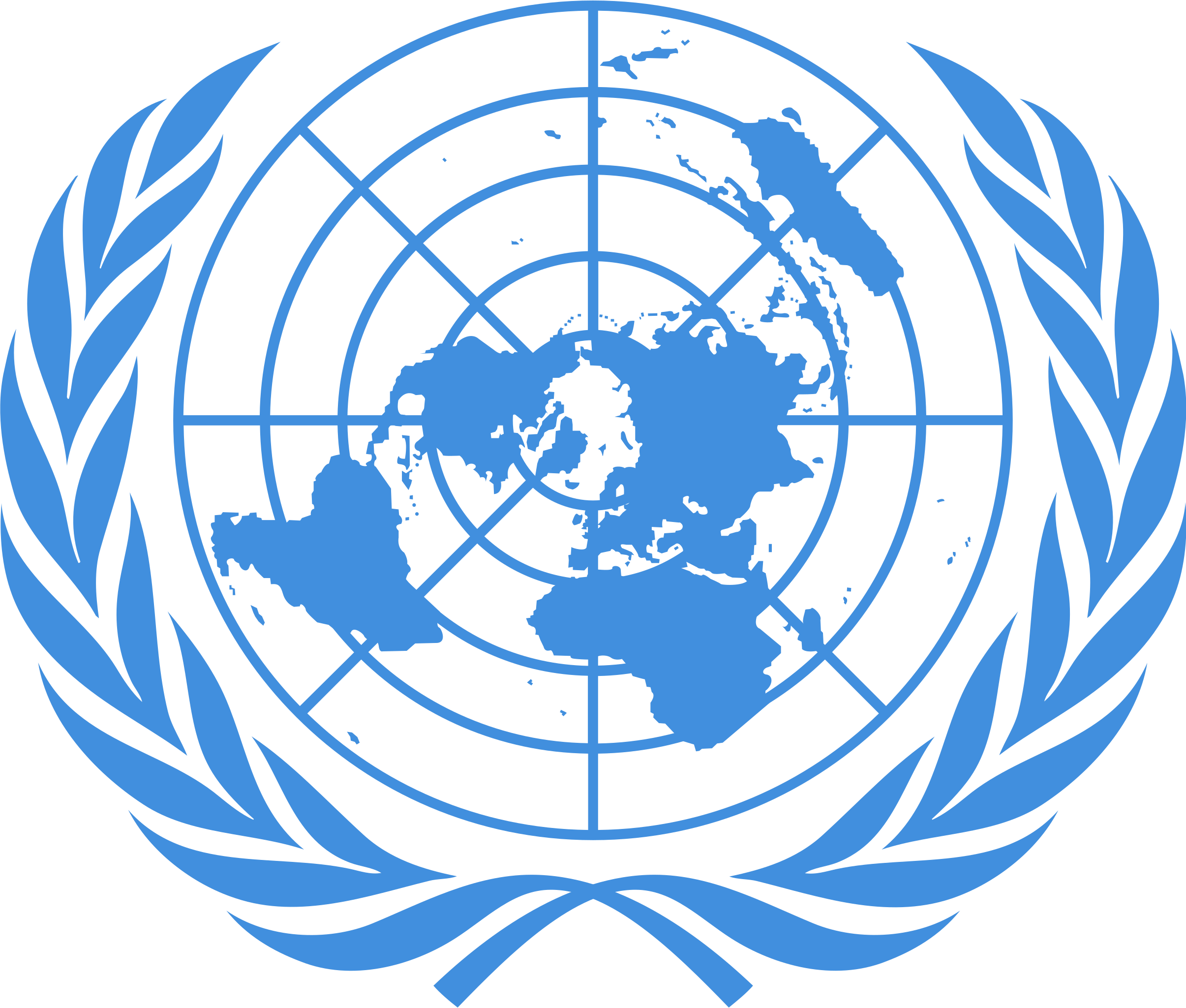 United Nations
United Nations
 United Nations Security Council
United Nations Security Council
 Hydrogen bomb
Hydrogen bomb

Die Vereinigten Staaten von Amerika (englisch United States of America; abgekürzt USA), kurz auch Vereinigte Staaten (englisch United States, abgekürzt U.S., US) genannt und häufig auch umgangssprachlich verkürzt zu Amerika (englisch America), sind eine föderale Republik. Diese besteht aus 50 Bundesstaaten, einem Bundesdistrikt (der Hauptstadt Washington, D.C.), fünf größeren Territorien und etlichen Inselterritorien. Die 48 zusammenhängenden Continental United States (häufig Lower 48 genannt) sowie Alaska liegen in Nordamerika, während Hawaii und kleinere Außengebiete im Pazifik beziehungsweise in der Karibik liegen. Das Land weist eine sehr hohe geographische und klimatische Diversität mit einer großen Vielfalt an Tier- und Pflanzenarten auf.
Die Vereinigten Staaten von Amerika sind der drittgrößte Staat der Erde, gemessen an der Fläche von 9,83 Millionen Quadratkilometern[3] (nach Russland und Kanada) und gemessen an der Bevölkerung von etwa 328 Millionen Einwohnern (nach China und Indien). Die nach Einwohnerzahl größte Stadt ist New York City, bedeutende Metropolregionen sind Los Angeles, Chicago, Dallas, Houston, Philadelphia, Washington, Miami, Atlanta, Boston und San Francisco, mit jeweils über 5 Millionen Einwohnern. Der Grad der Urbanisierung liegt bei 81,96 Prozent (Stand: 2015).[9]
Bedingt durch die Einwanderung aus einer Vielzahl von Ländern sind die Vereinigten Staaten eines der ethnisch multikulturellsten Länder. Anders als in 32 Bundesstaaten gibt es auf Bundesebene keine gesetzliche Amtssprache, jedoch herrscht Englisch als De-Facto-Amtssprache vor. Im Südwesten sowie in Miami ist zusätzlich die spanische Sprache weit verbreitet. Insgesamt waren 2015 mehr als 350 Sprachen in heimischem Gebrauch, davon allein 150 indigene. Darunter waren als größte die der Yupik in Alaska, der Dakota aus der Sioux-Sprachfamilie sowie die Sprache der Apachen in Gebrauch, dann Keres, die Sprache der Pueblo-Indianer, und Cherokee.[10]
Paläoindianer wanderten vor mehr als 13.000 Jahren aus Asien in das nordamerikanische Festland der heutigen Vereinigten Staaten ein (Buttermilk Creek Complex), nachdem sie mehrere Jahrtausende zuvor das heute zu den USA gehörende Alaska besiedelt hatten. Die europäische Kolonisierung begann etwa um 1600 vorwiegend aus England, allerdings in langwieriger Auseinandersetzung mit Frankreich. Die Vereinigten Staaten gingen aus den 13 Kolonien an der Atlantikküste hervor. Streit zwischen Großbritannien und den amerikanischen Kolonien führte zur Amerikanischen Revolution. Am 4. Juli 1776 verabschiedeten Delegierte der 13 Kolonien die Unabhängigkeitserklärung der Vereinigten Staaten und somit die Gründung der Vereinigten Staaten von Amerika. Der Amerikanische Unabhängigkeitskrieg, der mit der Anerkennung der Unabhängigkeit endete, war der erste erfolgreiche Unabhängigkeitskrieg gegen eine europäische Kolonialmacht. Die heutige Verfassung wurde am 17. September 1787 verabschiedet. Bisher wurden 27 Zusatzartikel ergänzt. Die ersten zehn Zusatzartikel, die gemeinsam als Bill of Rights bezeichnet werden, wurden 1791 ratifiziert und garantieren eine Vielzahl von unveräußerlichen Rechten.
Angetrieben von der Doktrin Manifest Destiny begannen die Vereinigten Staaten eine Expansion über Nordamerika, die sich über das 19. Jahrhundert erstreckte. Dies schloss die gewaltsame Vertreibung indigener indianischer Stämme, den Erwerb neuer Territorien u. a. im Mexikanisch-Amerikanischen Krieg und die Gründung neuer Bundesstaaten ein. Der Amerikanische Bürgerkrieg führte 1865 zum Ende der legalen Sklaverei in den Vereinigten Staaten. Zum Ende des 19. Jahrhunderts erreichten der Staat eine Ausdehnung bis zum Pazifik, ihre Wirtschaft wurde zur größten weltweit. Der Spanisch-Amerikanische Krieg und der Erste Weltkrieg bestätigten die Rolle der Vereinigten Staaten als globale Militärmacht. Aus dem Zweiten Weltkrieg gingen die USA als Supermacht und als erstes Land mit Atomwaffen hervor und wurden eines von fünf ständigen Mitgliedern im Sicherheitsrat der Vereinten Nationen. Nach Ende des Kalten Krieges und dem Zerfall der Sowjetunion sind die USA die einzige verbliebene Supermacht. Sie sind Gründungsmitglied der Vereinten Nationen, der Organisation Amerikanischer Staaten (OAS) und vieler weiterer internationaler Organisationen. Ihr politischer und kultureller Einfluss ist weltweit groß.
Die Vereinigten Staaten sind ein industrialisierter Staat und die größte Volkswirtschaft mit einem Bruttoinlandsprodukt in Höhe von 18,5 Billionen US-Dollar im Jahr 2016, was 25 % der nominellen oder 17 % der kaufkraftbereinigten globalen Wirtschaftsleistung entsprach.[7] Das Land hatte 2016 das achthöchste Pro-Kopf-Einkommen. Laut der Weltbank ist die Einkommensungleichverteilung in den Vereinigten Staaten eine der höchsten unter den OECD-Staaten.[11] Die Wirtschaftsleistung des Landes wird durch den Reichtum an natürlichen Ressourcen, eine gut entwickelte Infrastruktur und eine hohe durchschnittliche Produktivität begünstigt.[12][13] Obwohl die Wirtschaftsstruktur gemeinhin als postindustriell angesehen wird, ist das Land nach wie vor einer der weltgrößten Güterproduzenten.[14] Das Land war 2016 für 36 % der weltweiten Militärausgaben verantwortlich und liegt damit auf Platz 1, gefolgt von China mit 13 % und Russland mit 4,1 %.[15] Der in Folge der Terroranschläge am 11. September 2001 ausgerufene Ausnahmezustand ist seit 2001 in Kraft.[16]
美国是一个高度发达的资本主义国家,其政治、教育、经济、军事、文化、创新等实力领衔全球。作为世界第一军事大国,其高等教育水平和科研技术水平以及航空航天技术方面,也是当之无愧的世界第一,其科研经费投入之大、研究型高校企业之多、科研成果之丰富堪称世界典范。同时,美国还拥有苹果、微软、戴尔、惠普、波音等一系列世界著名企业。
美利坚合众国(英语:United States of America,缩写为 U.S.A.、通称为 United States、缩写为U.S.、或America、The States),中文通称美国,是由其下辖50个州、华盛顿哥伦比亚特区、五个自治领土及外岛共同组成的联邦共和国[注 1]。美国本土48州和联邦特区位于北美洲中部,东临大西洋,西临太平洋,北面是加拿大,南部和墨西哥及墨西哥湾接壤,本土位于温带、副热带地区。阿拉斯加州位于北美大陆西北方,东部为加拿大,西隔白令海峡和俄罗斯相望;夏威夷州则是太平洋中部的群岛。美国在加勒比海和太平洋还拥有多处境外领土和岛屿地区。此外,美国还在全球140多个国家和地区拥有着374个海外军事基地。
美国拥有982万平方公里国土面积,位居世界第三(依陆地面积定义为第四大国);同时拥有接近超过3.3亿人口,为世界第三人口大国。因为有着来自世界各地的大量移民,它是世界上民族和文化最多元的国家之一[14]。美国地形与气候复杂多样,是多种野生动物的家园[15]。
一万五千多年前,古印第安人自亚洲迁徙至北美大陆[16]。16世纪欧洲开始殖民北美。现今的合众国起始于东海岸的13个英属美洲殖民地。欧洲七年战争后,大不列颠王国与其殖民地之间的争议愈发剧烈,最终导致在1775年爆发美国革命。1776年7月4日,正与大不列颠进行独立战争的各殖民地派出代表,协同一致发表《独立宣言》。战争终止于1783年,大不列颠王国承认这13个北美殖民地脱离管辖而独立,与其签订《巴黎条约》。这场战争也是第一场成功脱离欧洲殖民帝国的独立战争[17]。1781年,《邦联条例》在邦联13个构成州获得通过,共同组成了邦联议会。1787年《美利坚合众国宪法》完稿,将“美利坚合众国”改制为联邦体制,联邦政府随之成立。1791年,合称为权利法案的十条宪法修正案获得批准,担保了基本民权。
美国自19世纪开始在北美通过强行移置原住民,征服及购买等方法大力扩张领土,随着逐渐不断地承认扩张领地为新州份,至1848年美国疆域已横跨整个北美大陆[18]。19世纪下半叶爆发的内战,使曾经合法的奴隶制度得以终结[19][20]。在19世纪末,美国已将其领土延伸到太平洋的夏威夷。美国经济在工业革命的推动下,自那时起也开始蓬勃发展[21]。随后美西战争的胜利,使美国势力进入加勒比海地区及太平洋西部;而参与第一次世界大战则奠定其作为一个全球性军事力量的地位。尽管在1930年代经历经济大萧条,美国在第二次世界大战获得胜利之后崛起成为超级大国。作为联合国安全理事会常任理事国,美国是世界上第一个研发出核武器,也是唯一一个曾将其投入实战的国家。战后美国与苏联进行了数十年冷战,顶峰时期的太空竞赛促使了人类第一次登月计划的成功。在1991年苏联解体后,美国成为世上唯一超级强国[22]。
美国作为一个高度发达国家,是世界上最大的进口国及第二大的商品出口国,国内生产总值按国际汇率排名世界第一、而依购买力平均则位列第二。在国民平均薪资[23]、人类发展指数、人均国内生产总值以及人均生产力[24]等社会经济学表现指标上,美国均处于世界领先地位。美国经济已步入后工业时代,服务行业占据经济主导地位,位列世界第一。同时,其生产制造业规模也极为庞大,位居于世界第二[25]。仅占据全世界4.4%人口的美国[26],贡献了世界四分之一的国内生产总值和三分之一的全球军事开支[27],这使其在经济和军事上均处于全世界最重要的地位。美国在政治和文化上是一支世界显著并影响深远的力量,也在科学研究和技术创新上占据世界领导地位[28]。美国是联合国、世界银行、国际货币基金组织、美洲国家组织等的创始成员国。
アメリカ合衆国(アメリカがっしゅうこく、英語: United States of America)、通称アメリカ、米国(べいこく)は、50の州および連邦区から成る連邦共和国である[6][7]。
アメリカ本土の48州および同国首都ワシントンD.C.(コロンビア特別区)は、カナダとメキシコの間の北アメリカ中央に位置する。
アラスカ州は北アメリカ北西部の角に位置し、東ではカナダと、西ではベーリング海峡をはさんでロシアと国境を接している。ハワイ州は中部太平洋における島嶼群である。
同国は、太平洋およびカリブに5つの有人の海外領土および9つの無人の海外領土を有する。985万平方キロメートル (km2) の総面積は世界第3位または第4位、3億1千7百万人の人口は世界第3位である。
同国は世界で最も民族的に多様かつ多文化な国の1つであり、これは多数の国からの大規模な移住の産物とされている[8]。
また同国の広大な国土における地理および気候も極めて多様であり、多種多様な野生生物が存在する。
米国は先進国かつ世界最大級の国民経済を有する[9]。同国経済は、豊富な天然資源と高度な労働者の生産性により支えられている[10]。同国経済は脱工業化社会だとされている一方、世界最大の製造国のうちの1つであり続けている[11]。同国は世界の軍事支出の37%を占め[12]、世界最高位の経済・軍事大国であり、多大な影響を及ぼす政治・文化的勢力であり、科学研究・技術革新におけるリーダー的存在とされている[13]。
The United States of America (USA), commonly known as the United States (U.S. or US) or America, is a country composed of 50 states, a federal district, five major self-governing territories, and various possessions.[f] At 3.8 million square miles (9.8 million km2), the United States is the world's third or fourth largest country by total area[g] and is slightly smaller than the entire continent of Europe's 3.9 million square miles (10.1 million km2). With a population of over 327 million people, the U.S. is the third most populous country. The capital is Washington, D.C., and the largest city by population is New York. Forty-eight states and the capital's federal district are contiguous in North America between Canada and Mexico. The State of Alaska is in the northwest corner of North America, bordered by Canada to the east and across the Bering Strait from Russia to the west. The State of Hawaii is an archipelago in the mid-Pacific Ocean. The U.S. territories are scattered about the Pacific Ocean and the Caribbean Sea, stretching across nine official time zones. The extremely diverse geography, climate, and wildlife of the United States make it one of the world's 17 megadiverse countries.[19]
Paleo-Indians migrated from Siberia to the North American mainland at least 12,000 years ago.[20] European colonization began in the 16th century. The United States emerged from the thirteen British colonies established along the East Coast. Numerous disputes between Great Britain and the colonies following the French and Indian War led to the American Revolution, which began in 1775, and the subsequent Declaration of Independence in 1776. The war ended in 1783 with the United States becoming the first country to gain independence from a European power.[21] The current constitution was adopted in 1788, with the first ten amendments, collectively named the Bill of Rights, being ratified in 1791 to guarantee many fundamental civil liberties. The United States embarked on a vigorous expansion across North America throughout the 19th century, acquiring new territories,[22] displacing Native American tribes, and gradually admitting new states until it spanned the continent by 1848.[22]
During the second half of the 19th century, the Civil War led to the abolition of slavery.[23][24] By the end of the century, the United States had extended into the Pacific Ocean,[25] and its economy, driven in large part by the Industrial Revolution, began to soar.[26] The Spanish–American War and World War I confirmed the country's status as a global military power. The United States emerged from World War II as a global superpower, the first country to develop nuclear weapons, the only country to use them in warfare, and a permanent member of the United Nations Security Council. During the Cold War, the United States and the Soviet Union competed in the Space Race, culminating with the 1969 Moon landing. The end of the Cold War and the collapse of the Soviet Union in 1991 left the United States as the world's sole superpower.[27]
The United States is the world's oldest surviving federation. It is a federal republic and a representative democracy. The United States is a founding member of the United Nations, World Bank, International Monetary Fund, Organization of American States (OAS), and other international organizations. The United States is a highly developed country, with the world's largest economy by nominal GDP and second-largest economy by PPP, accounting for approximately a quarter of global GDP.[28] The U.S. economy is largely post-industrial, characterized by the dominance of services and knowledge-based activities, although the manufacturing sector remains the second-largest in the world.[29] The United States is the world's largest importer and the second largest exporter of goods, by value.[30][31] Although its population is only 4.3% of the world total,[32] the U.S. holds 31% of the total wealth in the world, the largest share of global wealth concentrated in a single country.[33]
Despite wide income and wealth disparities, the United States continues to rank very high in measures of socioeconomic performance, including average wage, human development, per capita GDP, and worker productivity.[34][35] The United States is the foremost military power in the world, making up a third of global military spending,[36] and is a leading political, cultural, and scientific force internationally.[37]
Les États-Unis, en forme longue les États-Unis d'Amérique4 (en anglais : United States et United States of America, également connus sous les abréviations US et USA), sont un pays transcontinental dont l'essentiel du territoire se situe en Amérique du Nord. Les États-Unis ont la structure politique d'une république constitutionnelle fédérale à régime présidentiel composée de cinquante États, dont quarante-huit sont adjacents et forment le Mainland. Celui-ci est encadré par l'océan Atlantique à l'est et l'océan Pacifique à l'ouest, et se trouve bordé au nord par le Canada et au sud par le Mexique. Les deux États non limitrophes sont l'Alaska, situé à l'ouest du Canada, et Hawaï, un archipel situé au milieu de l'océan Pacifique-nord. De plus, le pays comprend quatorze territoires insulaires disséminés dans la mer des Caraïbes et le Pacifique. La géographie et le climat du pays sont extrêmement diversifiés, abritant une grande variét